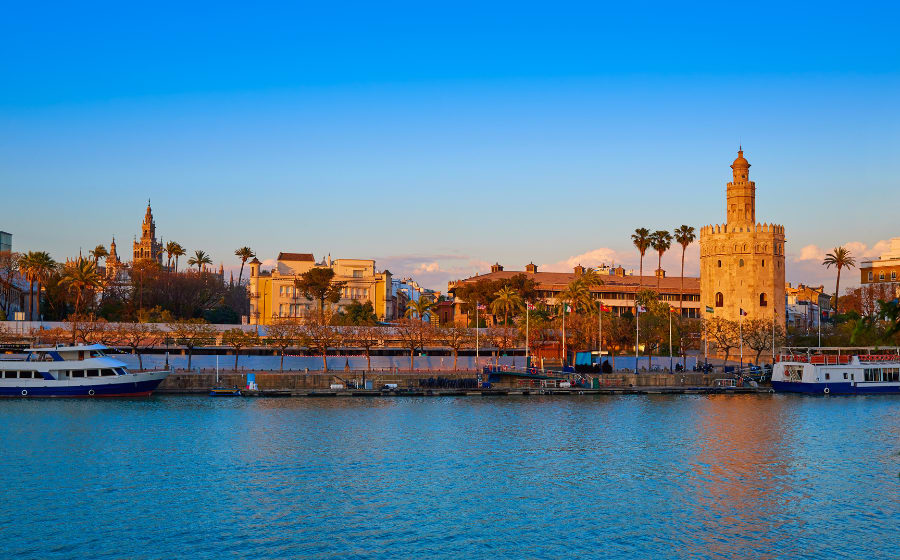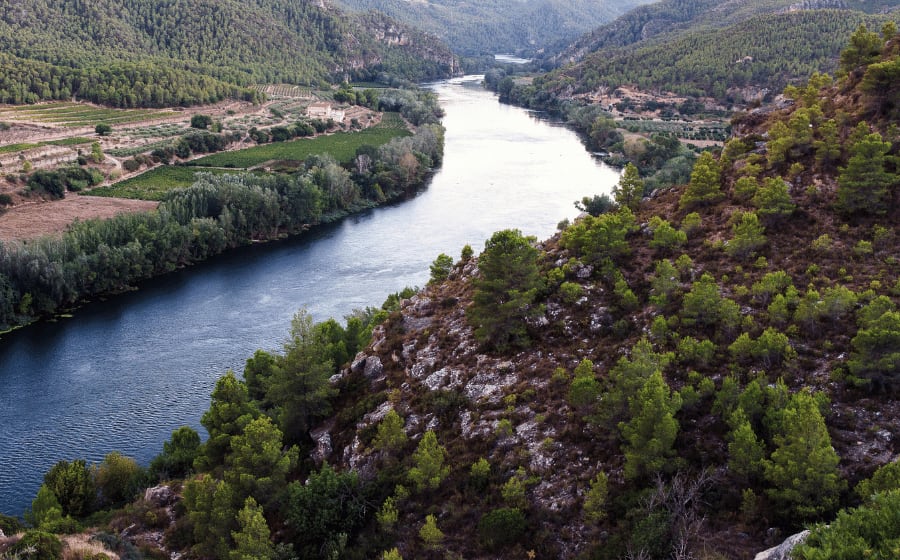The Best Rivers in Barcelona + 7 more in Catalonia!
November 28, 2022
Win a FREE Trip to Spain!
Exciting Announcement! For the first time, we're thrilled to offer exclusive trips to the heart of Spain - an experience like no other. This isn't your typical tourist journey; it's a unique opportunity to immerse yourself in authentic Spanish culture, alongside real locals and our passionate team.
But there's more! Simply by requesting information about this amazing trip, you'll be entered into a special draw to win a Fully Paid Trip to Spain for Two. And that's not all - everyone who inquires will receive an exclusive bonus gift, valued at $500, available only now.
Ready to Discover the Real Spain?Click Here ↑ to Request Information & Enter the Draw!
How lucky is Barcelona to be able to enjoy beautiful beaches! But besides them, the impressive rivers of the region of Catalonia offer us an endless number of activities that can go unnoticed.
The power of nature to give us peace is impressive, and we often plan our trips without considering embarking on some experiences involving natural resources. That is why I’ll explain everything about the rivers of Barcelona, their extension, and the basin’s surface. Accompanied by photos, videos, and interactive maps, you can see how diverse and impressive the region of Catalonia is!!
This way, you’ll learn how to create your own experience in Catalonia’s beautiful natural pools, waterfalls, and rivers. I promise you’ll disconnect from the fast pace of the city and reconnect with your roots again.
Without further ado, let’s get started!
Table of Contents ▼ ▶
What are the main rivers in Barcelona?
The most important rivers in Barcelona are the Besòs River, with a length of 18 km and a 3010 km² surface area of the basin; and the Llobregat River, which gives its name to the county, with 170 km and 4,948 km², respectively.
| River | Lenght (in Km) | Surface area of the basin (in km²) | Province |
|---|---|---|---|
| Ter River | 208 km | 3010 km² | Girona |
| Llobregat River | 170 km | 4,948 km² | Barcelona |
| Francolí River | 60 km | 1,18 km² | Tarragona |
| Gaià River | 59 km | 423,8 km² | Barcelona |
| Tordera River | 55 km | 894 km² | Barcelona |
| Cenia River | 49 km | 156,7 km² | Castellón and Tarragona |
| Foix River | 41 km | 312 km² | Barcelona |
| Daró River | 35 km | 318,8 km² | Girona |
| Besòs River | 18 km | 1038,31 km² | Barcelona |
1. Besòs River
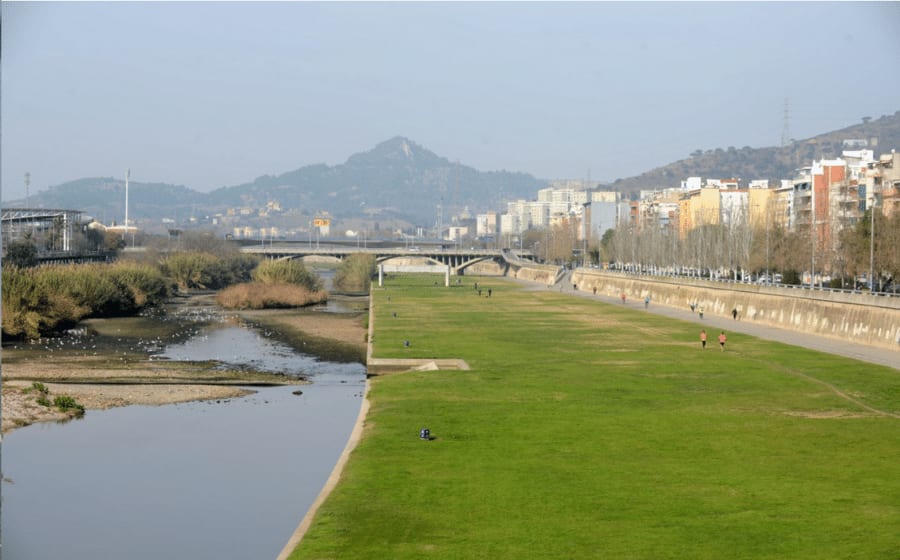
The Besós (Besòs in Catalan) is a Spanish river located in the province of Barcelona with a length of 17.7 km. It rises in Montmeló, in the Vallés Oriental region, when the rivers Mogent and Congost join and flow into the Barcelonés, in the municipality of San Adrián de Besós.
The flow of the Besós is typical of the Mediterranean: very irregular throughout the year.
Its river basin crosses and passes through the following towns: Montmeló, Mollet del Vallés, Martorellas, La Llagosta, Moncada y Reixach, Santa Coloma de Gramanet, Sant Adrián de Besós, and Barcelona. At the same time, it ends up flowing into the Mediterranean when arriving at Sant Adrià del Besòs. A highlight of this outing is the Besòs River Park, a public space located along the last 9 kilometers of the Besòs riverbed, from its confluence with the Ripoll River. It is one of the most important green spaces in the metropolitan region of Barcelona and has a total surface area of 115 hectares. This place opened in 2004 after a major sanitation project that fought the degradation of the riverbed. And today, it has become an ideal place to enjoy a day of outdoor leisure.
Fortunately, new habitats were created to preserve the fauna and wildlife in this park. The improvement and location of the space in the final stretch of the river led to the detection of more than 200 different species of birds!!! Find out more information about them in the following posts:
Exploring the Spanish Wildlife and Its 11 Emblematic Animals
The Most Common Birds found in Spain + 8 Endemic Species
13 Fascinating Mediterranean Sea Facts You Always Wanted to Know
Besòs River Park offers visitors many different activities they can create, such as picnics, exercises, yoga classes, running, or cycling. Undoubtedly, a plan to take into account disconnecting from the routine and breathing tranquility. But if you prefer to take a chill walk, that’s also perfect since the views are amazing and invite you to walk along the banks of the river to reach the waterfront.
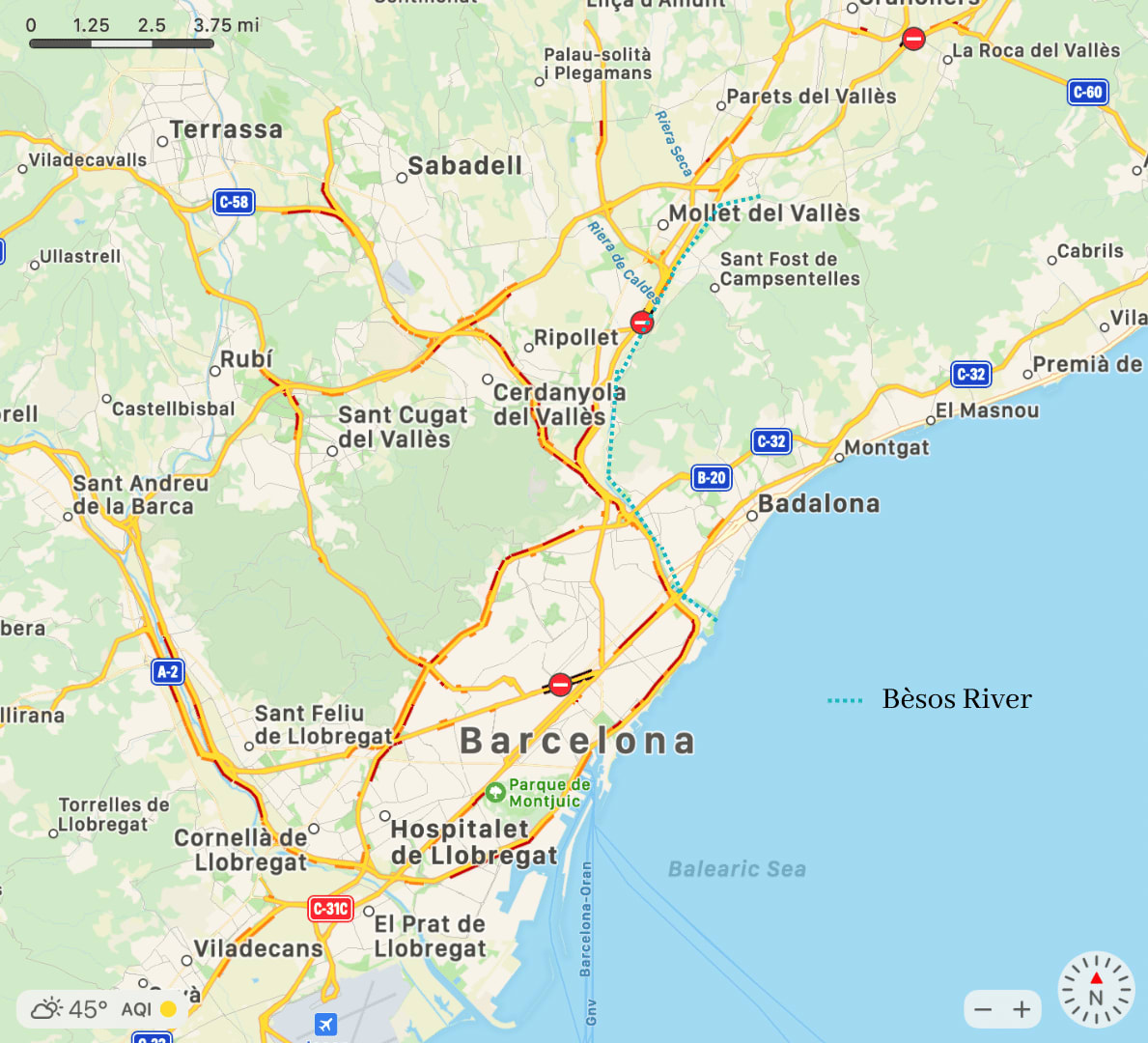
Above all, the Besòs river park acts as a link to the parks of Litoral, Molinet, Aigües, and Can Zam. In the following articles, you’ll find other impressive parks we have in Spain!!
The 16 Spanish National Parks and Their Breathtaking Views
Nature in Spain: 21 Spectacular Wonders + Its Native Fauna & Flora
2. The Llobregat River
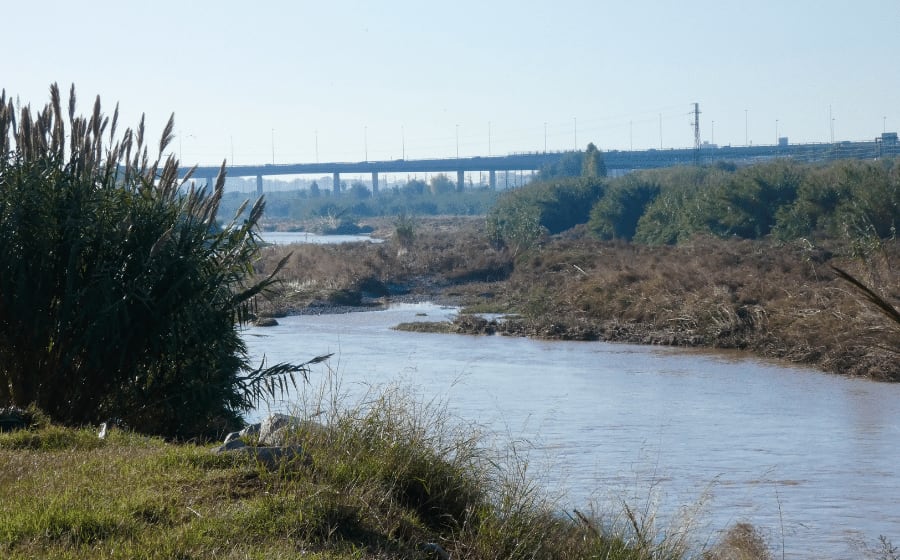
The Llobregat River is one of the best-known and most important rivers in Catalonia. The Llobregat gives its name to the county, and it has been the protagonist of remarkable historical events and has been a strategic axis since ancient times.t is a waterway that has marked the history of the territory and each of the regions through which it flows, and endless spots to enjoy nature. Its main tributaries are the Cardener river and the Noya river, which irrigates an area of famous wine production.
The Natural Areas of the Llobregat Delta are home to a great biological diversity that attracts nature lovers and delights observers from all over the world. More than 20 different species of orchids can also be found in the area.
Here is a video of The Llobregat River Park, the result of an open territorial transformation project located in the metropolitan area of Barcelona.

Now let’s travel in time to understand the curious origin of this river. A long time ago, industries were located in the Llobregat basin in the 19th and 20th centuries, taking advantage of its energy and water.
In the last centuries, the river has been the driving force behind the industrial growth in Catalonia, leaving marks that remain in the form of industrial heritage even today.
Although the water of the river receives numerous contributions of pollution from industries and liquid waste from the urban centers located along its course, actions are made to reduce them. In addition, the Llobregat suffers today from contamination by the residues of the potassium mines, which causes its salinity to be high. Yes, I know… many people also wonder what makes water in the seas salty. Here’s why:
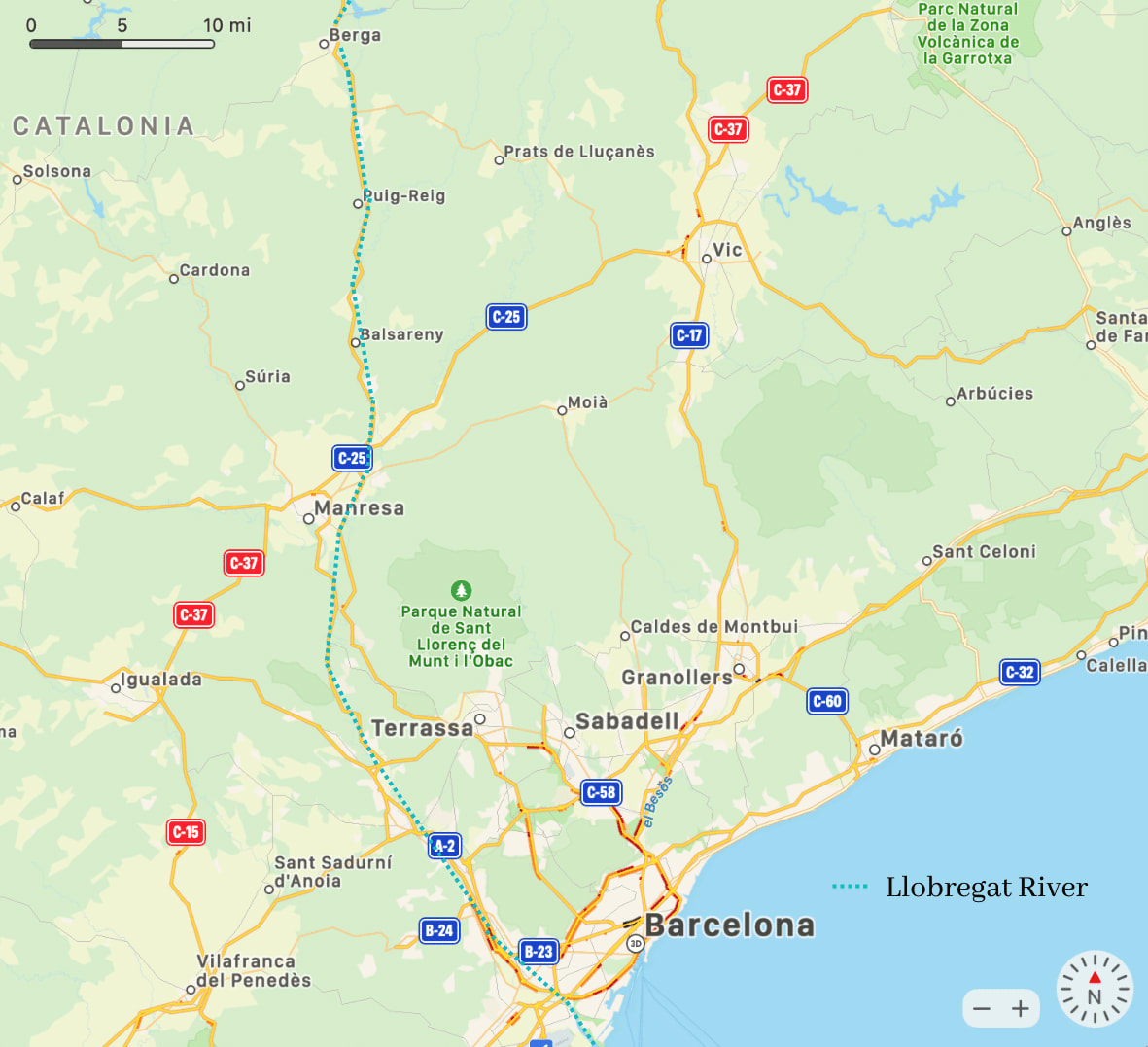
Another of the benefits of this river is that it irrigates the wine crops of Pla de Bages, whose area has vineyard terraces built with dry stone, and it was one of its main economic activities until the 19th century. Find out about the most famous wine regions in Spain in this article:
Activities in Barcelona Rivers
Between March and October, anglers can be found in the sectors of the river basin with the most incredible variety of fish, delighting in trout, chub, common barbel, and other species. There is also an atmosphere of sporting festivity when tourists and visitors near the town of L’ Hospitalet in Barcelona. Among the most typical activities are:
- Diving
- Sailing
- Water skiing
- Jet skiing
- Canoeing
- Crafting
- Zip lines
- Bungee jumping
- Surfing
- Fishing
- Balloon rides
- Boat
- Hiking
But don’t worry, keep reading this post, and I will show you the best plans you can make if you are in Barcelona and want to visit nearby rivers, natural pools, waterfalls, and streams. And even more important, those famous for their incredible views, refreshing waters, and unforgettable experiences for the whole family!
The Best Rivers in Catalonia (close to Barcelona city!)
1. Salt del Molí
Location: Osona, Girona
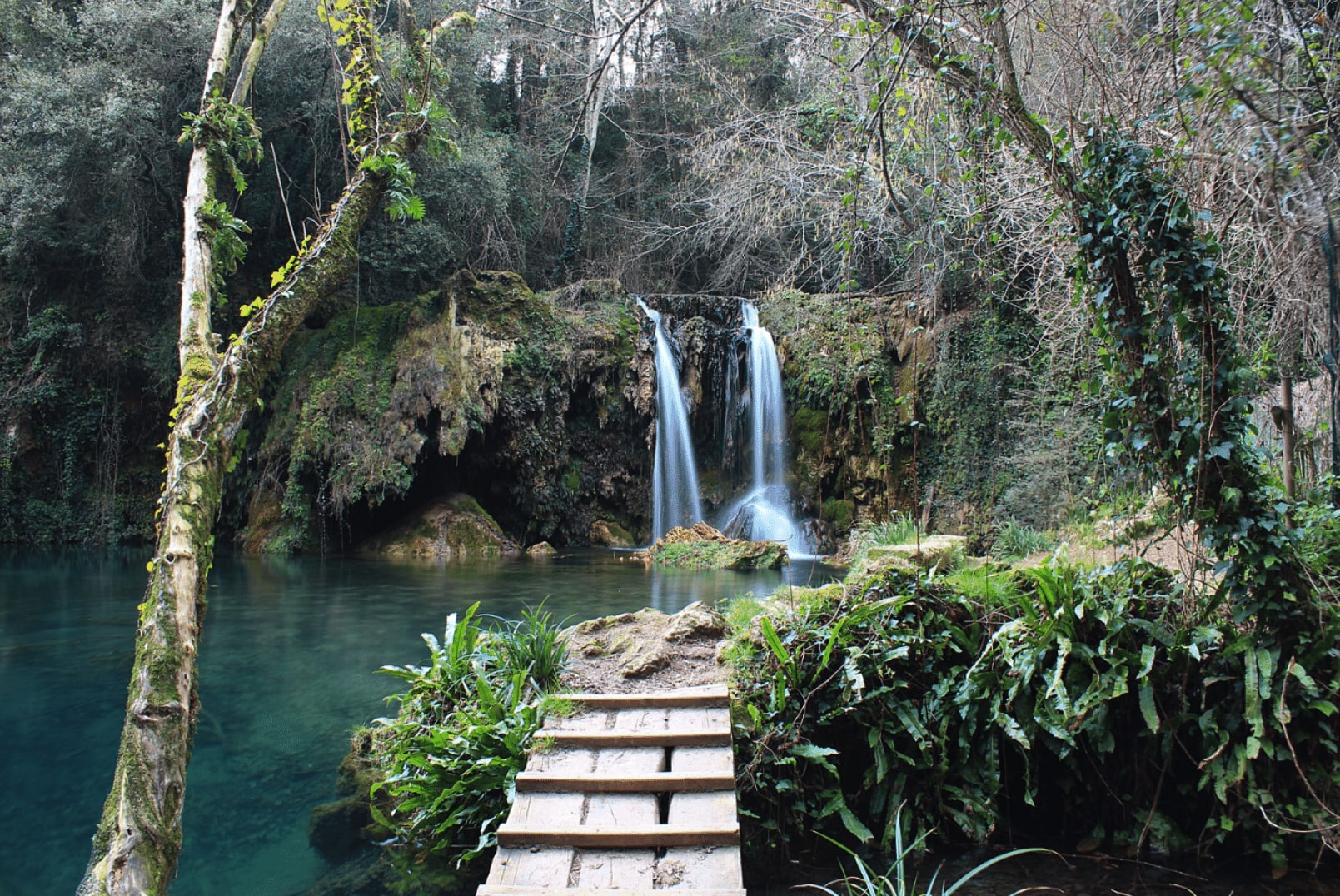
El Salt del Molí is located in the small town of Vidrà, in the Osona region, and belongs to the province of Girona. It is a tiny town to go to by car, known for being a route suitable for all family members! When you arrive after a 4km walk, you’ll encounter 20 meters of a beautiful waterfall.
It is a natural setting surrounded by beech and boxwoods, where the river Ges, a tributary of the Ter, meet to give us many waterfalls and pools to enjoy nature!
Where does the name come from? Its name, the Salt del Molí, is because the waterfall used to operate an old mill. (molí is short for Molino in Spanish, which means windmill)
2. Les Olles del Baubo
Location: 43596, Tarragona

Les Olles is a group of six or eight waterholes connected in the Canaletes river, in the municipality of Horta de Sant Joan, right on the border with Bot.
This area is best known for its paradisiacal crystal waters. However, at certain times, the volume of people can break the charm. It is enjoyable for children, who can bathe at their leisure and make jumps, and it is not dangerous.
I recommend it to all families, friends, and children looking for a good place with crystal water to spend the day and bathe without worries near Barcelona city!
Casa de las Letras is a rural house in the Matarraña in front of the Ports of Beceite, (in Les Olles de San Joan) It is an old village house in Lledó that has been restored as a charming cottage ideal for enjoying the region. They also have a short video about Les Olles which I included above! :)
3. Pont Cabradís
Location: 25716 Gósol, Lleida
Pont Cabradís is a natural bridge over the river Aigua de Valls and has little more than two dozen meters long. It is an extraordinary place with many formations inside and water emergences worth discovering!
There is a large central pool that prevents you from reaching the end. Here the water accumulates a large amount of water. To cross it, you must get wet above the waist (yes, any time of the year)
4. Riera de Merlés
Borders: Ripollés, Bergadá, Osona and Bages in Catalunya
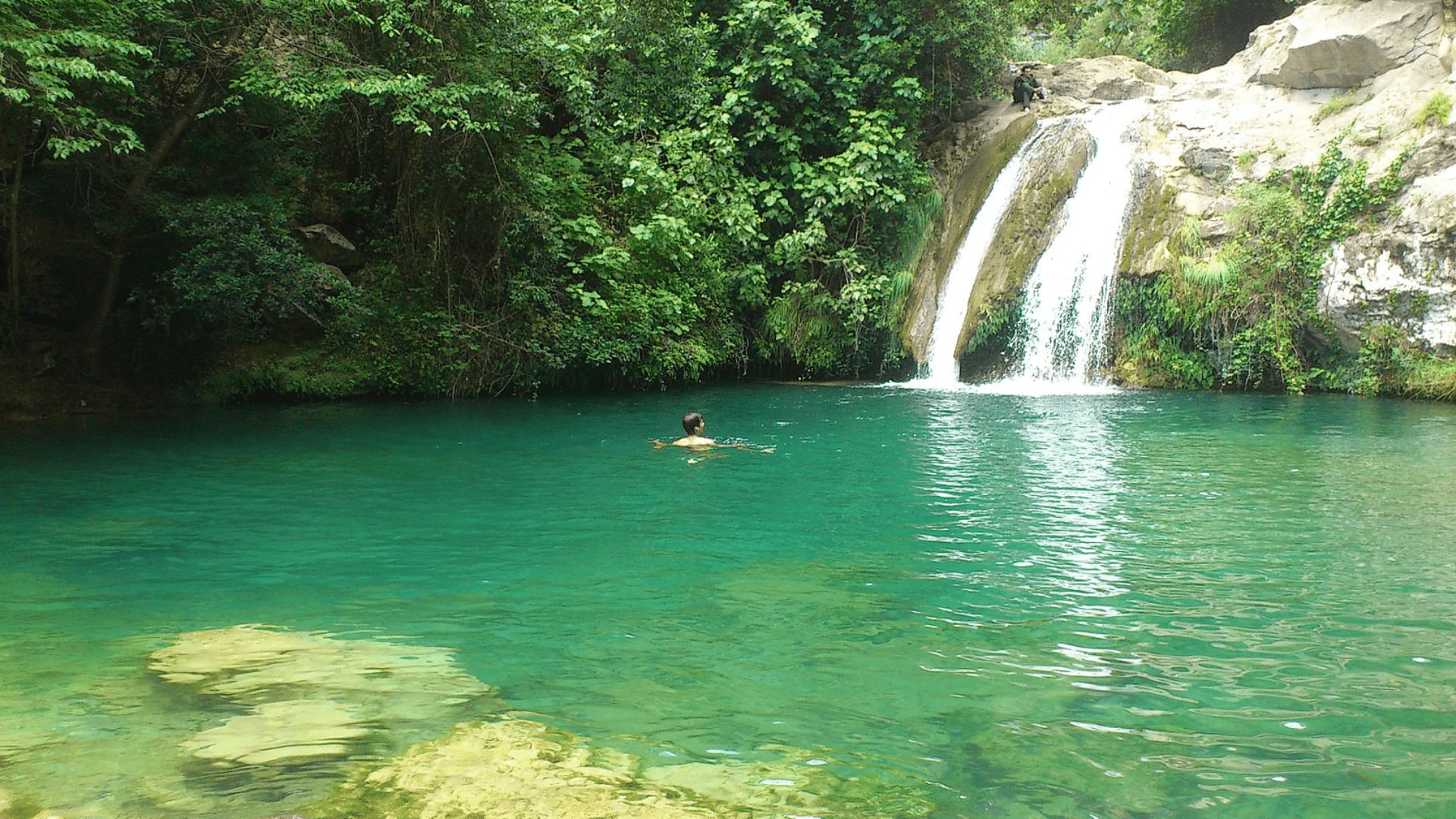
The Riera de Merlès is a small river that descends from the Catalan mountain range of Catllarás and passes through 3 regions: Bages, Osona, and Berguedà. The river also has deep pools and striking waterfalls that hikers, cyclists, and fishermen often visit. Moreover, there are several campsites in the area for camping and routes for hikers!
This river has a reasonably generous flow due to the confluence of several streams during its descent —the rocks, eroded by time, form whimsical curves with a Gaudinian touch, which makes it a paradisiac spot!
5. Ter River
Location: Girona
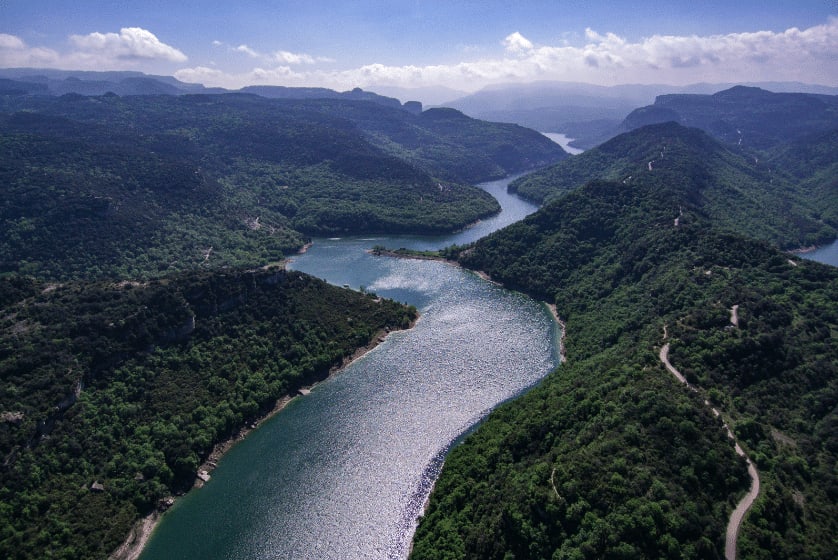
The Ter is the most important river in the autonomous community of Catalonia, which runs through the provinces of Girona and Barcelona. It has a length of 167 kilometers. It rises in the Ulldeter cirque in the eastern Pyrenees. After passing through Camprodón and San Juan de las Abadesas, it reaches Ripoll, where it receives its tributary, the Freser, in the Ripollés region. It flows into the Mediterranean Sea in front of the Medes Islands. It is the longest and most abundant of the internal basins of Catalonia!!
This river is not known for being a river where you can get a dip near Barcelona. Still, I could only continue this article by mentioning this significant river you must know! Besides, look at how beautifull it is.
Four thematic routes allow people to visit the river without harming nature and preserve this natural beauty! Which, along the course of the river, highlights various aspects related to the river ecosystem:
- The cultural heritage, which is linked to the uses of water, such as dams, bridges, colonies, washing places, factories, and turbines.
- The natural heritage: which are habitats, landscapes, fauna, and geology.
- The literary heritage: with authors and the traces of the historic floods.
6. Niu de l’Àliga
Location: Tarragona

The “Niu de l’Àliga” is a natural pool fed by the Glorieta River, a tributary of the Francolí. It is located a few kilometers from Alcover in the province of Tarragona, about 20 minutes drive from this village. You can enjoy the beauty of its clear waters and the wild nature that grows around it, accompanied by a swim for the more daring!!
Its popularity is due, among other things, to the proximity of the recreational area of Mas de Forès, an eighteenth-century manor house equipped with parking and a picnic area.
Yes, it is accompanied by a famous hiking trail, but you don’t have to worry because you can do it without any problem. It is suitable for beginners, young children, and families.
7. Foradada River
Borders: Cantonigròs, Osona in Barcelona.
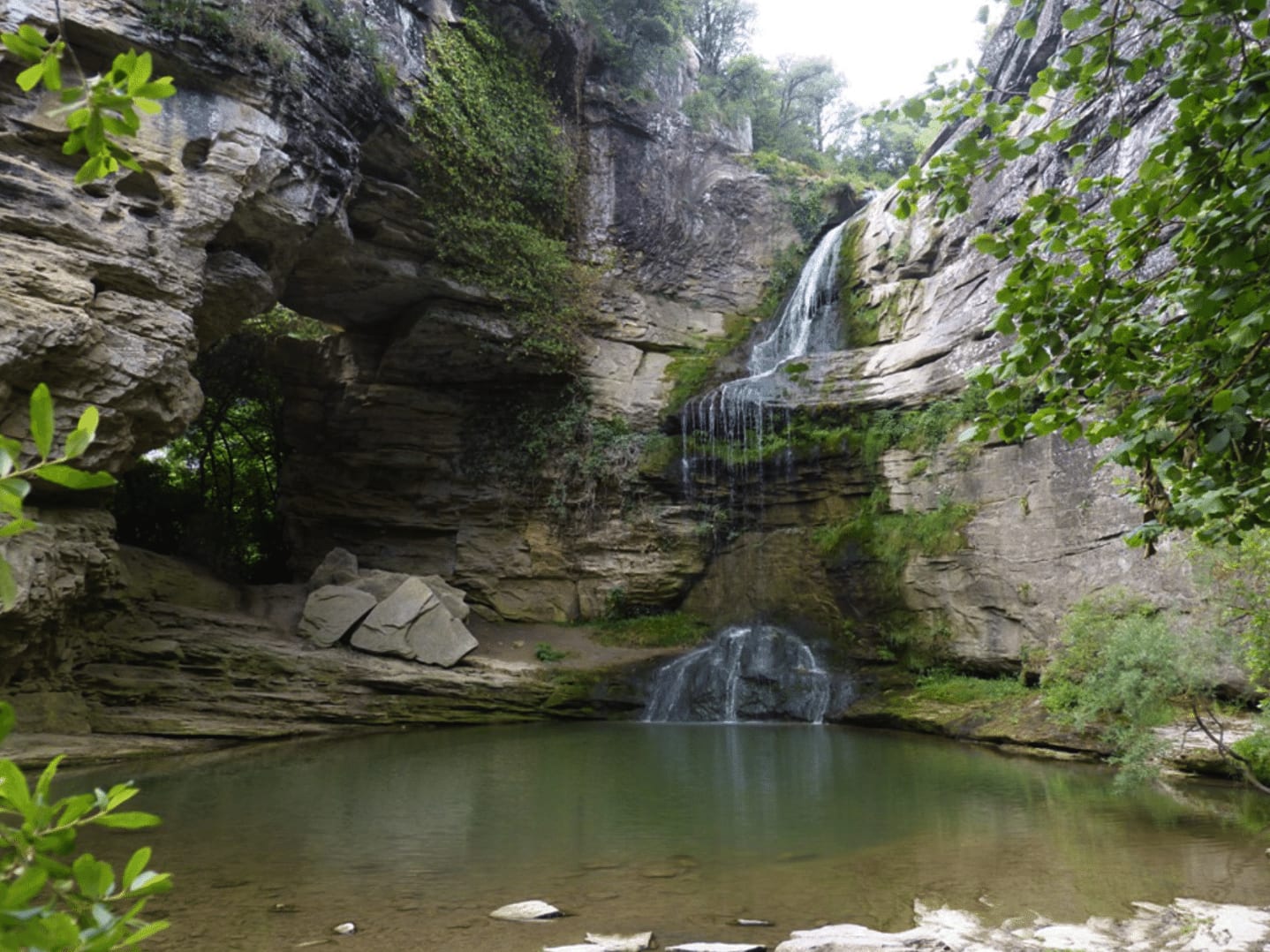
La Foradada is not far away from Gerona. It is a 15-meter-high waterfall of great beauty that comes from the Riera de les Gorges river. It can be accessed by a simple walking route, suitable for the whole family to enjoy a fun swim in the countryside.
For lovers of heights and hikes, nearby in this region is a beautiful viewpoint. The Foradada also bears the name of an elevated place of great beauty. You can enjoy a full panoramic view of the entrance created by the Ebro River at its mouth, giving rise to one of the most important wetlands in Catalonia. The excursion is about 9 kilometers and can be done in about two hours. Read our following posts for more information about these topics!
Experience The Ebro River: 8 Interesting Facts, Best Spots, Beautiful Pictures and More!
7 remarkable Spanish Countryside Locations for a perfect getaway
Now you know that the rivers in the Province of Barcelona are: the Llobregat, the Gaià, Tordera, Foix, and the Besòs Rivers. But these are not the only wonders the great region of Catalonia has to offer. So I hope you want to visit some of these beautiful waterfalls and natural pools that the rivers provide. Let me know if you have already been to one of them and what your experience was!




